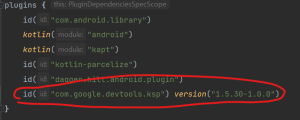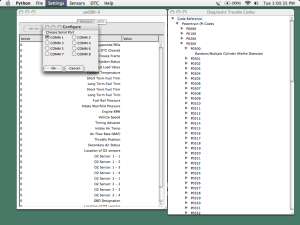MATLAB is a powerful programming language and computing environment that has been gaining popularity in recent years. It is widely used in various fields such as engineering, science, finance, and mathematics, among others. If you’re new to programming, MATLAB is an excellent choice because of its simple and intuitive syntax that makes it easy to learn and use.
In this blog, we’ll explore some of the exciting features and applications of MATLAB, and why you should consider learning this language.
- User-friendly interface
MATLAB has an excellent user interface that allows users to interact with their code in a more intuitive way. The environment offers a variety of tools such as live scripts, interactive apps, and debugging tools that make it easier for users to code and debug their projects.
- Powerful computational capabilities
MATLAB’s computational capabilities are one of its most significant advantages. It offers a wide range of mathematical functions and operations that enable users to solve complex problems easily. MATLAB also supports vector and matrix operations, making it an excellent choice for numerical analysis and data processing.
- Rich library of tools and functions
MATLAB offers a vast library of built-in tools and functions that are designed to simplify complex computations. These tools include image and signal processing, control systems, optimization, and statistics. Additionally, MATLAB supports the integration of external libraries, which makes it possible to extend the functionality of the language.
- Graphical capabilities
MATLAB is a powerful tool for creating visualizations and graphs. It offers a wide range of plotting functions that enable users to generate high-quality graphs and charts. The language also supports the creation of custom user interfaces, making it possible to create interactive applications and dashboards.
- Applications in various fields
MATLAB is widely used in various fields such as engineering, science, finance, and mathematics. It is an essential tool for researchers, scientists, and engineers who need to perform complex computations and analysis. MATLAB is also used in finance to develop trading strategies and risk management tools.
In conclusion, MATLAB is an excellent programming language that offers a wide range of tools and functions for solving complex problems. It has a simple and intuitive syntax, making it easy to learn and use. Additionally, MATLAB has applications in various fields, making it a valuable skill for individuals pursuing careers in science, engineering, finance, and mathematics. So, whether you’re a beginner or an experienced programmer, learning MATLAB is definitely worth considering.
Advantages
MATLAB is a popular programming language and computing environment that has several advantages. Some of these advantages include:
- Easy to learn and use: MATLAB has a simple and intuitive syntax that makes it easy to learn and use, even for beginners. The language offers a range of built-in functions and tools that simplify complex computations, making it an excellent choice for data analysis and numerical simulations.
- Versatile: MATLAB has a wide range of applications, from engineering and science to finance and mathematics. It offers a range of built-in tools and functions for various fields, making it a valuable tool for researchers, scientists, and engineers.
- Rich library of tools and functions: MATLAB has a vast library of built-in tools and functions that simplify complex computations. These tools include image and signal processing, control systems, optimization, and statistics. Additionally, MATLAB supports the integration of external libraries, making it possible to extend the functionality of the language.
- Powerful computational capabilities: MATLAB is a powerful tool for solving complex problems. It supports vector and matrix operations, making it an excellent choice for numerical analysis and data processing. MATLAB’s computational capabilities are further enhanced by its support for parallel computing, allowing users to take advantage of multi-core processors and clusters to speed up computations.
- Graphical capabilities: MATLAB is a powerful tool for creating visualizations and graphs. It offers a wide range of plotting functions that enable users to generate high-quality graphs and charts. The language also supports the creation of custom user interfaces, making it possible to create interactive applications and dashboards.
- Excellent documentation and support: MATLAB has excellent documentation and support resources, including online help, tutorials, and a vast community of users and developers. This makes it easier for users to learn and use the language and find solutions to their problems.
In conclusion, MATLAB is a powerful and versatile programming language and computing environment that offers several advantages, including its ease of use, versatility, rich library of tools and functions, powerful computational capabilities, graphical capabilities, and excellent documentation and support. These advantages make it an excellent choice for data analysis, numerical simulations, and scientific research in various fields.
Disadvantages
While MATLAB has several advantages, it also has some disadvantages that users should be aware of. These disadvantages include:
- Cost: MATLAB is a commercial software, and users need to purchase a license to use it. The cost of a license can be high, especially for individual users or small businesses. Additionally, some of the toolboxes and add-ons that extend the functionality of MATLAB are also costly.
- Limited flexibility: While MATLAB is a versatile programming language, it may not be the best choice for some applications that require more flexibility or performance. For example, MATLAB is not well-suited for low-level programming or real-time applications that require precise timing.
- Limited community support: While MATLAB has a vast community of users and developers, it may not have the same level of support as some open-source languages such as Python. This may make it harder for users to find solutions to their problems or collaborate with other developers.
- Limited compatibility: MATLAB may not be compatible with some programming languages or platforms. For example, some users may need to integrate MATLAB code with other languages or tools, which may require additional software or plugins.
- Proprietary format: MATLAB uses a proprietary data format for storing data, which may make it harder for users to share or integrate their data with other tools or platforms.
In conclusion, while MATLAB has several advantages, it also has some disadvantages, including its cost, limited flexibility, limited community support, limited compatibility, and proprietary data format. Users should carefully consider these factors when choosing a programming language or computing environment for their projects.










